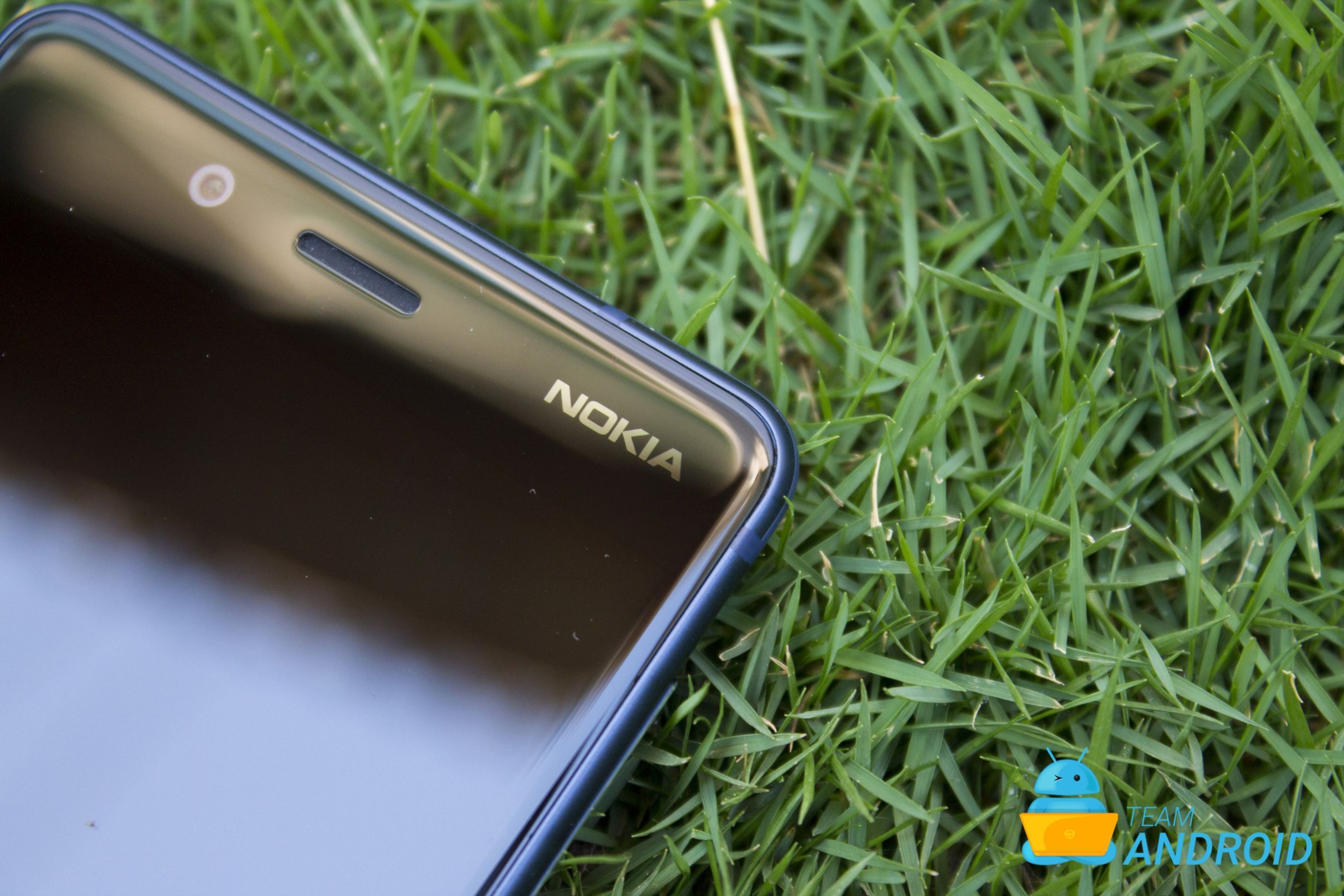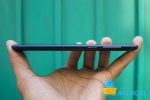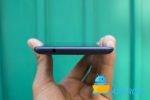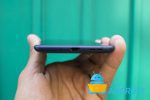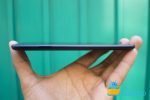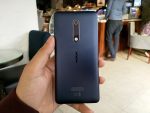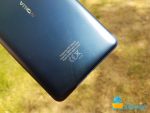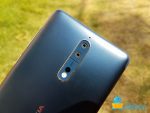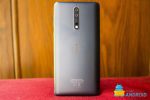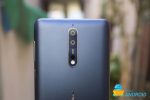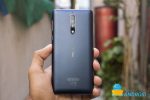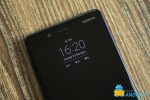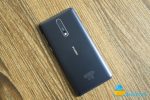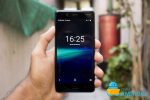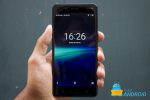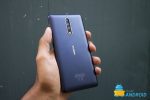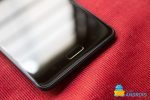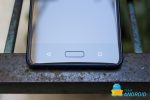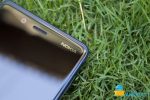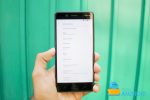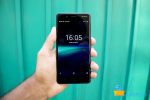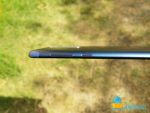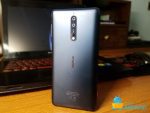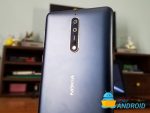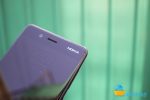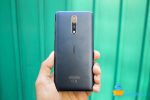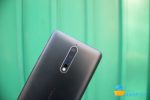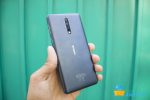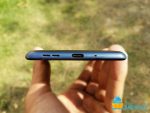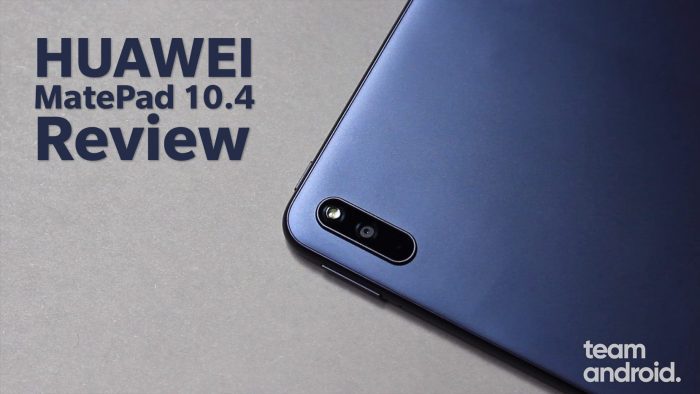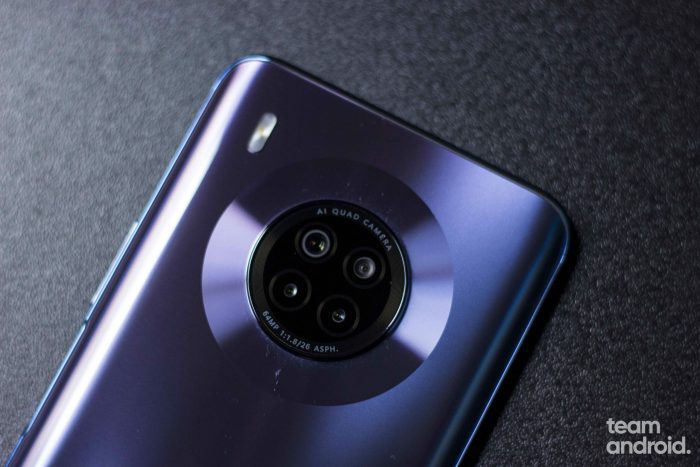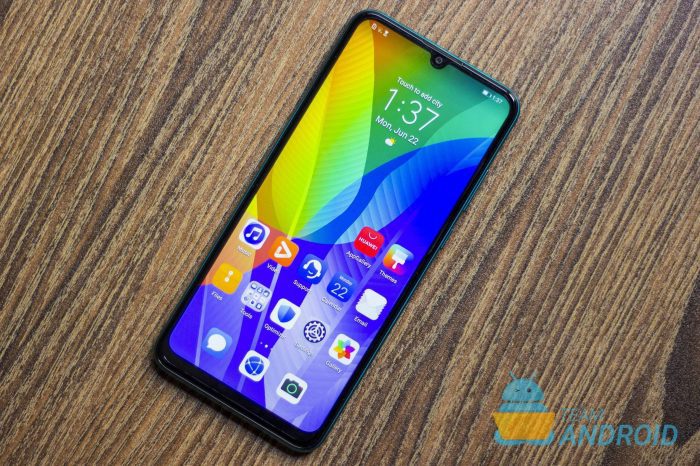We have with us the latest flagship smartphone from HMD Global, Nokia 8 and we will be taking a detailed look at it in this review! HMD Global is a very young company but the brand has managed to make a strong impact on the overall Android smartphone market. After completing its budget lineup, the brand has come up with its first attempt at a flagship smartphone – Nokia 8. We have the device with us and we will be sharing our thoughts in this article.
Nokia 8 comes as a higher-specification device from HMD Global. What makes the Nokia 8 stand out is the hardware it ships with. The phone achieves flagship status by providing 2017’s highest performing chip, the Snapdragon 835. The processor is then paired with UFS 2.1 64GB storage and 4GB RAM. All in all, the Nokia 8 is right up there with competing flagship devices from other manufacturers.
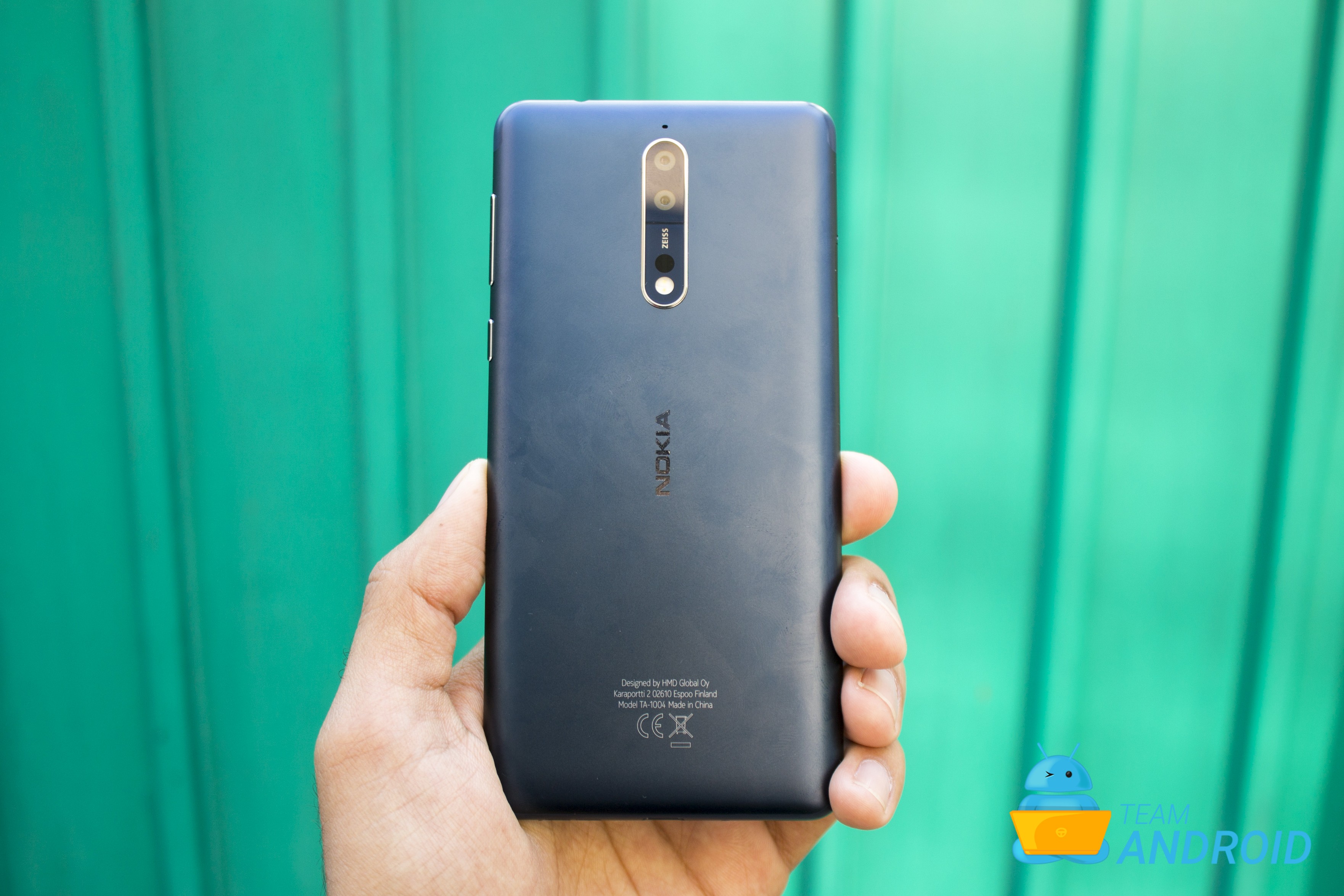
Before we dive into our review, let’s get the technical specifications for the Nokia 8 out of the way:
- Network: LTE Cat. 9, 3CA, 450Mbps DL/50Mbps UL
- Display: 5.3-inchQHD (2560×1440) IPS
- Processor: Qualcomm® Snapdragon™ 835 Mobile Platform, Octa core, (4*2.5GHz Qualcomm® Kryo™ CPU + 4*1.8GHz Kryo)
- OS: Android 8.1 (Oreo)
- Camera Rear: 13 MP (Colour + OIS) + 13 MP (Mono), 1.12um, f/2.0, 76.9˚, PDAF, IR range finder, dual tone flash
- Camera Front: 13 MP PDAF, 1.12um, f/2.0, 78.4˚, display flash
- Connectivity: 802.11 a/b/g/n/ac (MIMO), BT 5.0, GPS/AGPS+GLONASS+BDS, NFC (sharing) ANT+
- Sensors: Ambient light sensor, Proximity sensor, Accelerometer, E-compass, Gyroscope, Fingerprint Sensor, Hall sensor, Barometer
- Memory: 4GB RAM + 64GB Storage and Micro SD slot (up to 256GB)
- Dimension: 151.5mm x 73.7mm x 7.9mm
- Battery: 3,090mAh, Fast Charging
Nokia 8: Design and Hardware
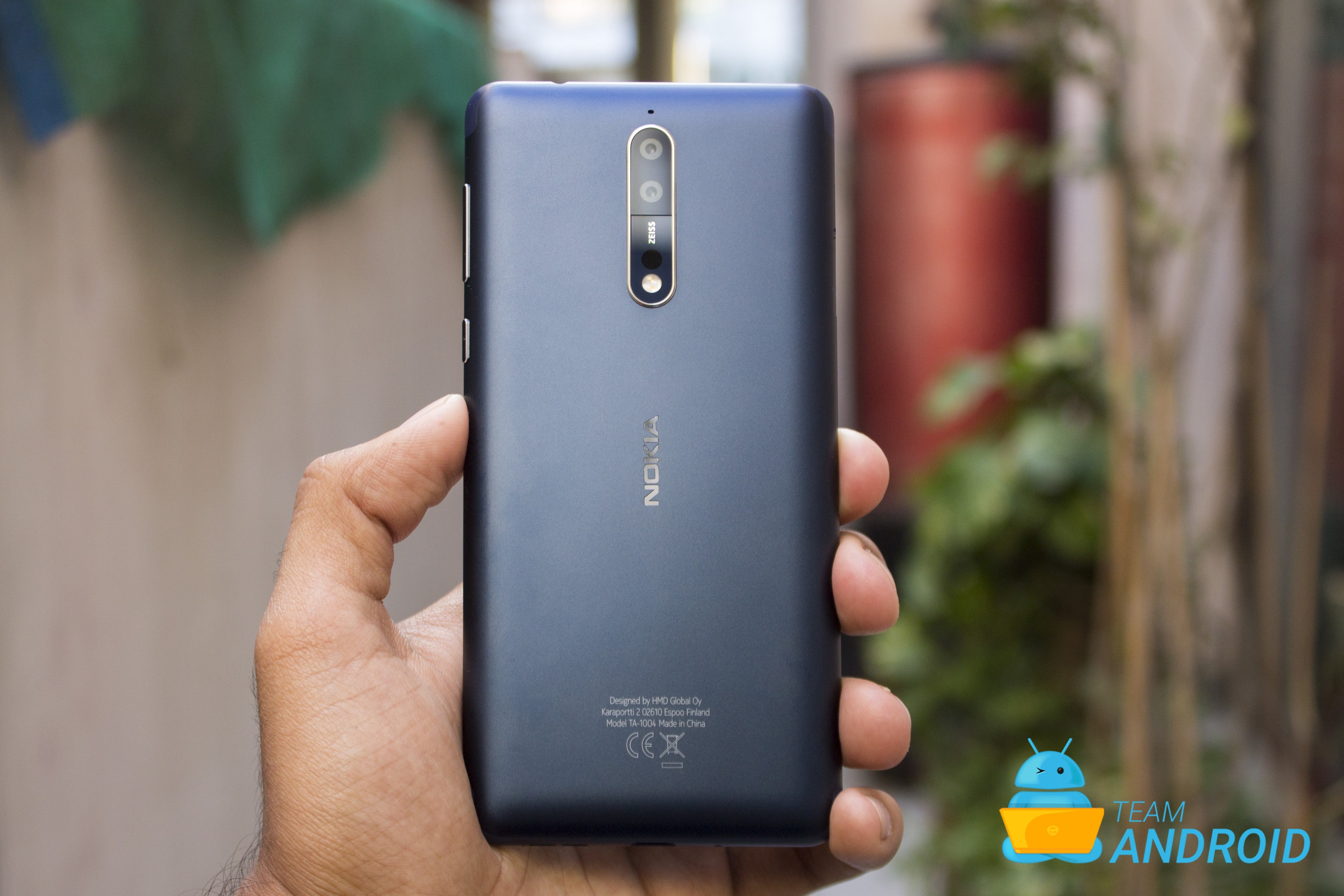
Right from the get go, Nokia 8 reminds us strongly of older Nokia smartphones. The elongated camera module, boxy design and Nokia logo at the back are all design cues from previous Nokia smartphones. This is a great move by HMD Global as it allows the brand to immediately create a perception of quality and reliability among its users. The Nokia 8 that we have shipped in the Tempered Blue color which is one of the matte color variations. You can also opt for a glossy back as well.
Starting from the display section, being a 2017 smartphone, the Nokia 8 features large top and bottom chins. Many might take this as a short-coming but it actually isn’t. This allows HMD Global to provide a more traditional experience to its users. With the extra bezels, the phone has very proportionate design and enables it to have that signature box-edged design. Also, these extra chins allow for a front-facing fingerprint scanner. To top it off, there is a Nokia logo placed at the very top-right of the phone which again is a characteristic from older Nokia smartphones.
The fingerprint scanner is actually a static glass piece and it acts as a home button as well. Nokia 8 doesn’t feature on-screen navigation buttons rather it places physical buttons right below the display. The fingerprint reader is quite fast and reliable. Also, you don’t have to first wake up the smartphone to unlock it, rather you can just use the fingerprint scanner to wake it up and unlock it at the same instance.
The back is where Nokia 8 distincts itself from lower end Nokia phones. Nokia 8 features a dual lens camera system at the back which wasn’t featured on any other 2017 HMD Global smartphone. Also, the optics are worked on by HMD Global in collaboration with ZEISS optics. The camera system forms a great selling point for the smartphone and we will be talking about it more right ahead. There is a chamfered edge around the back camera section which emits a nice sheen and highlights it even more. Lastly, as the whole body is made from a single aluminium block, Nokia had to fit in the antennas on top of it. For this, HMD Global uses a clever design that curves each of the lines over the top and bottom hence creating a unified back piece with no obstructions.
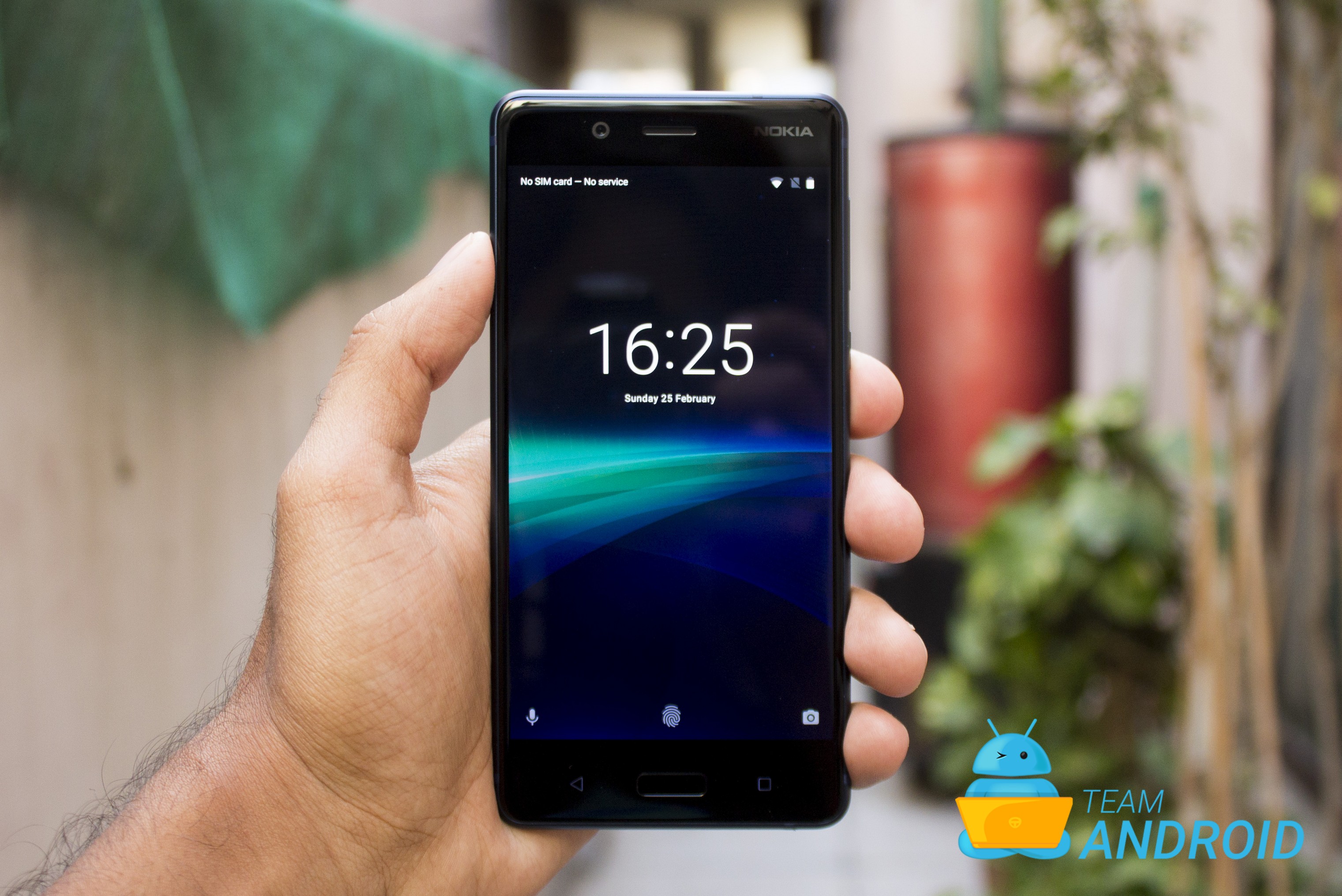
Taking a look at each of the edges of the phone, Nokia 8 features all of its physical buttons on the left side. There is no difference between the volume rocker and power button except for the length which takes some getting use to. These buttons also feature a similar chamfer as on the camera section.
The left side is blank except for the microSD card and SIM slot. Our variant featured dual SIM capability which meant the tray inside our unit was hybrid, you can either have two SIMs or one singular SIM and a SD card.
At the bottom, there is the main USB Type-C connection which lets you charge the phone and transfer data. Alongside the Type-C port, there are cutouts for the speaker. The phone, unfortunately, doesn’t have front firing or even stereo speakers. Lastly, along the top, there is a 3.5mm headphone jack which is quite a rare sight these days.
We seldomly take a look at the audio recording capabilities of any smartphone but Nokia 8 is an exception. HMD Global has outfitted Nokia 8 with 3 microphones which enable the phone to record spatial 360 degree audio. Further, you can also audio focus on a single subject. At first glance this looks like a big gimmick but actually, it is quite useful. The phone can record clear audio from a single source even in a noisy environment,. Further, the audio focus works quite well, to an extent that we wish Nokia continues this trend and implements it on more smartphones.
Nokia 8 places itself at the very top of HMD Global’s lineup. It comes equipped with Snapdragon 835 chipset from Qualcomm which is a massive power house. Moreover, the 4GB LPDDRX RAM and 64GB base storage tops it all off. As there is adequate performance, Nokia 8 comes with a 5.3 inch 2560×1440 display that is wrapped in Corning Gorilla Glass 5, 2.5D glass. The 2.5D aspect makes the glass meet with the aluminium body quite smoothly and seamlessly leaving no sharp edges. All in all, the internals are top notch and they should blaze through every demanding task that might arise.
Nokia 8: Camera
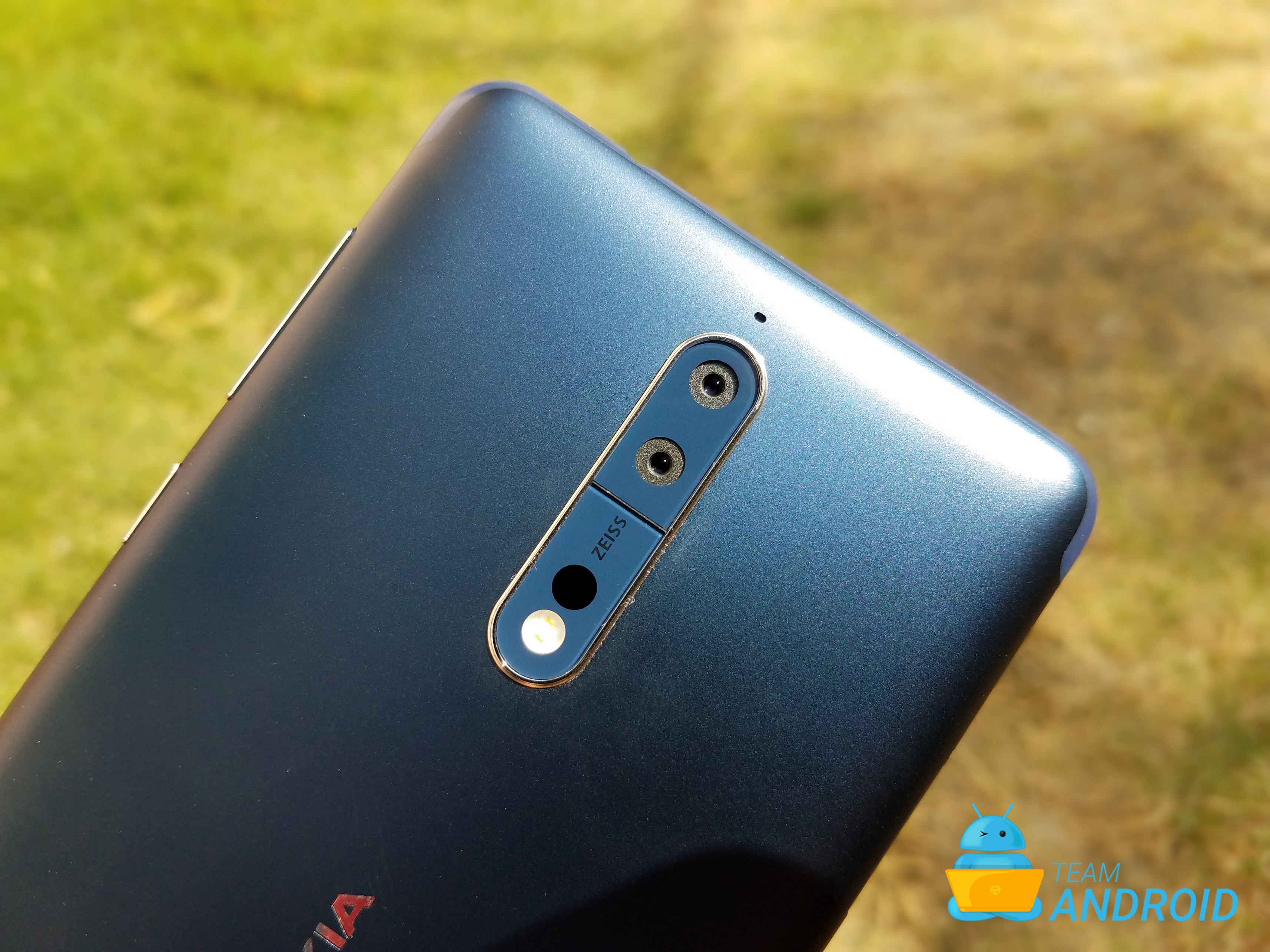
Nokia 8 is the first serious camera smartphone from HMD Global. The phone features a primary dual lens camera setup along with high-end ZEISS optics. Both of these lenses capture at 13MP resolution but one module is monochrome-only. This allows Nokia 8 to have good looking portrait shots.
In our tests, the camera is definitely a step up from what we have previously seen but it doesn’t end up competing with other flagship devices. If the lighting is perfect, you can create stunning shots with the Nokia 8 but as it is a 2017 smartphone, low-light is what matters. As manufacturers push the envelope of smartphone photography with each iteration, Nokia 8 is still a touch behind.
The portrait effect faced difficulties when mapping complex subjects. Further, even if shooting without the portrait effect, there was a large amount of noise in low-light situations and it was terribly slow at focusing. We think the problem lies in the software. The camera app on the Nokia 8 is quite basic and it doesn’t let you play around with much of the settings. If Nokia fixes the software side, we do think Nokia 8 can perform largely better.
Take a look at some of the sample shots we captured with the Nokia 8:
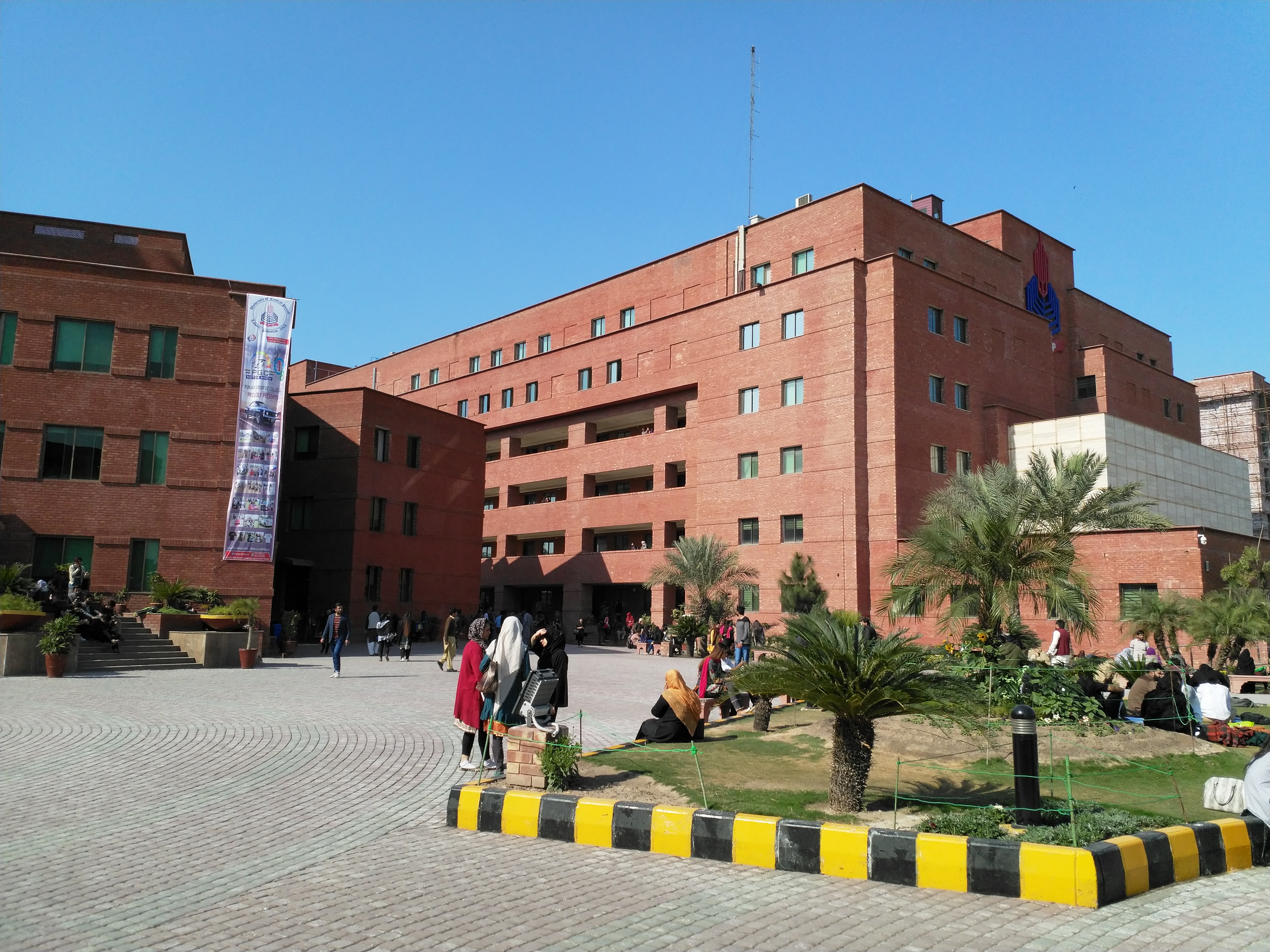
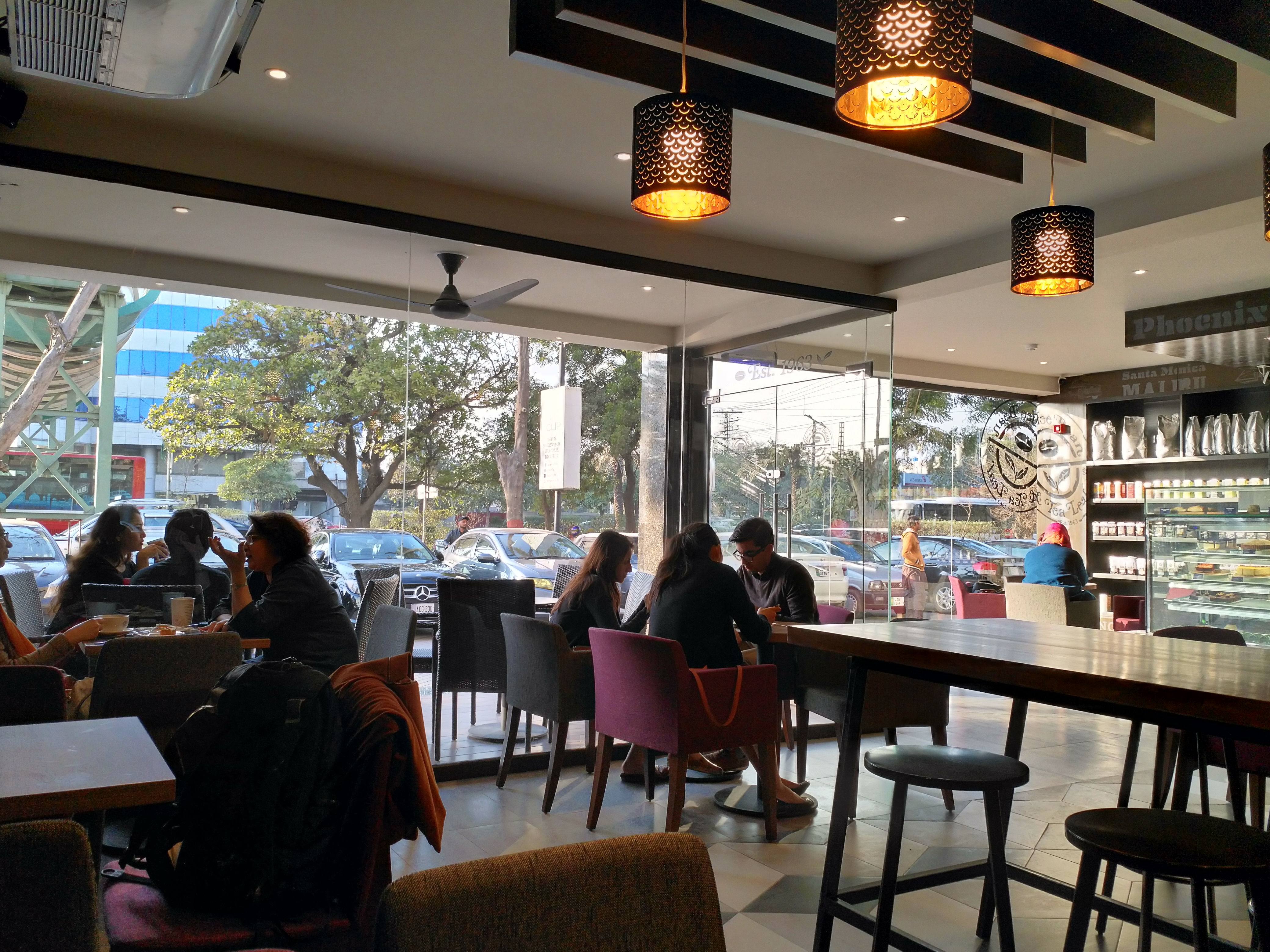
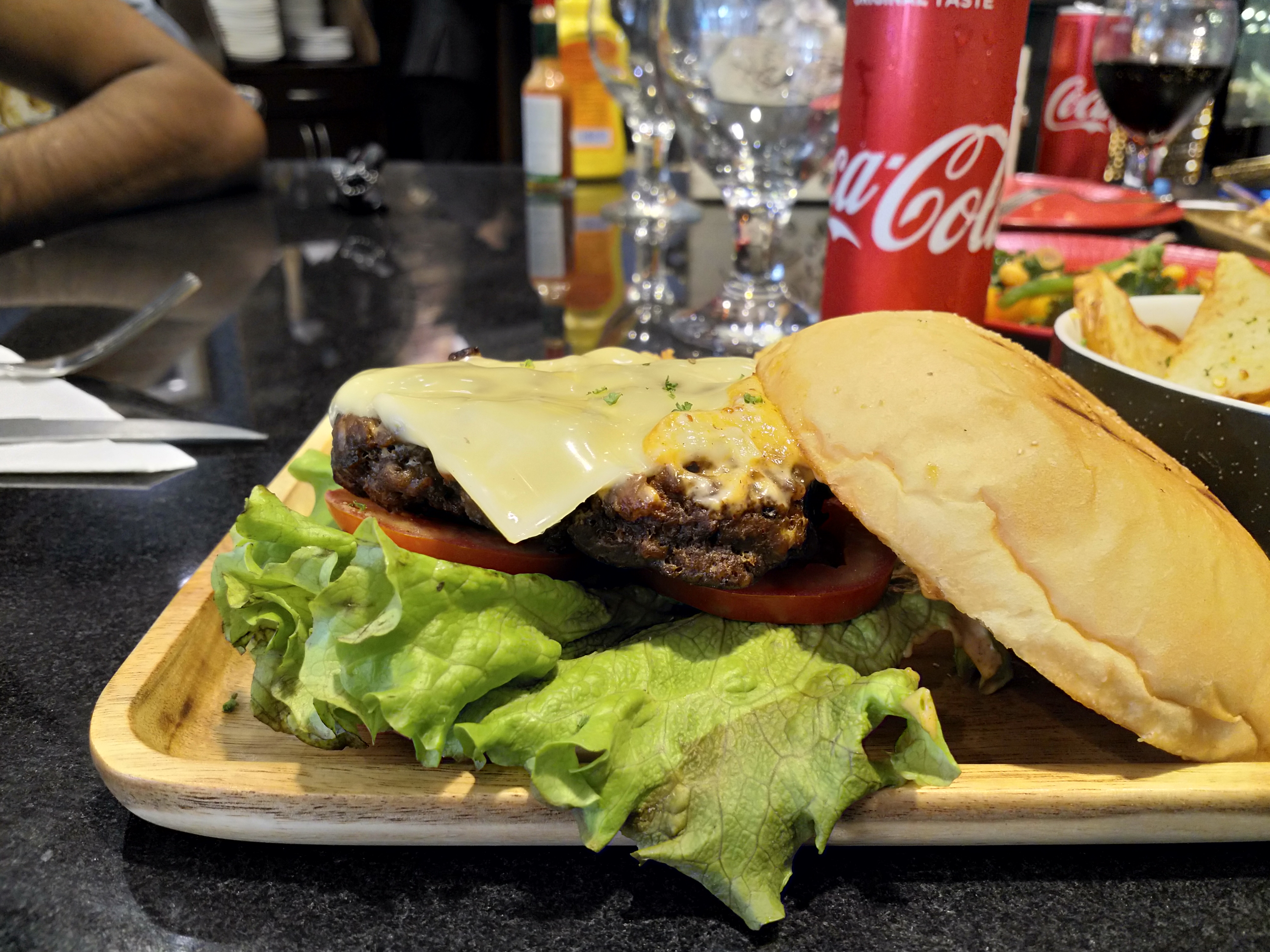
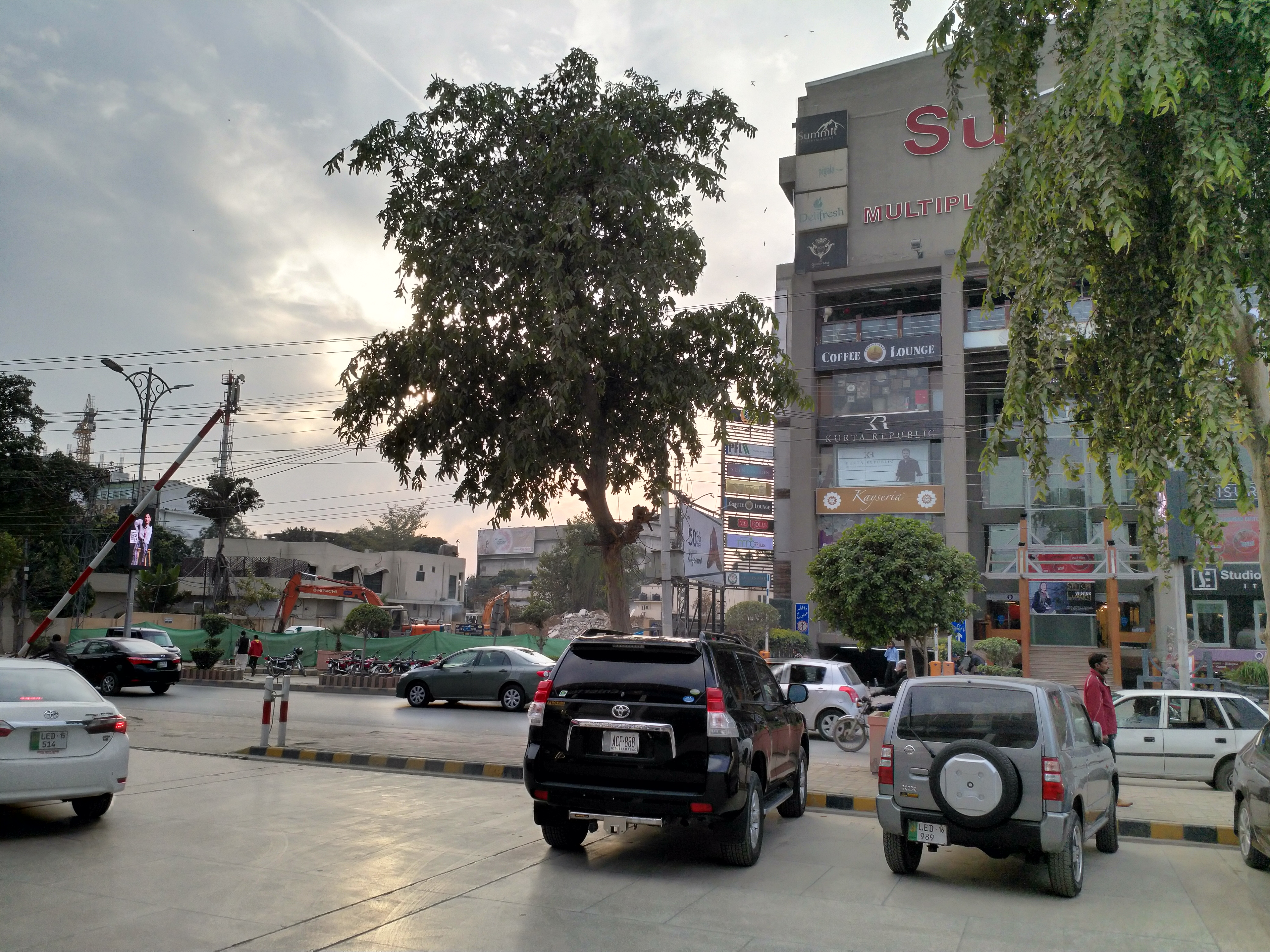
For the front facing camera, it again is a 13MP wide-angle lens with ZEISS optics. The key thing with the front facing camera is the auto-focusing which is a big plus. You can choose as to what to focus on with the front camera as you do with the primary sensors.
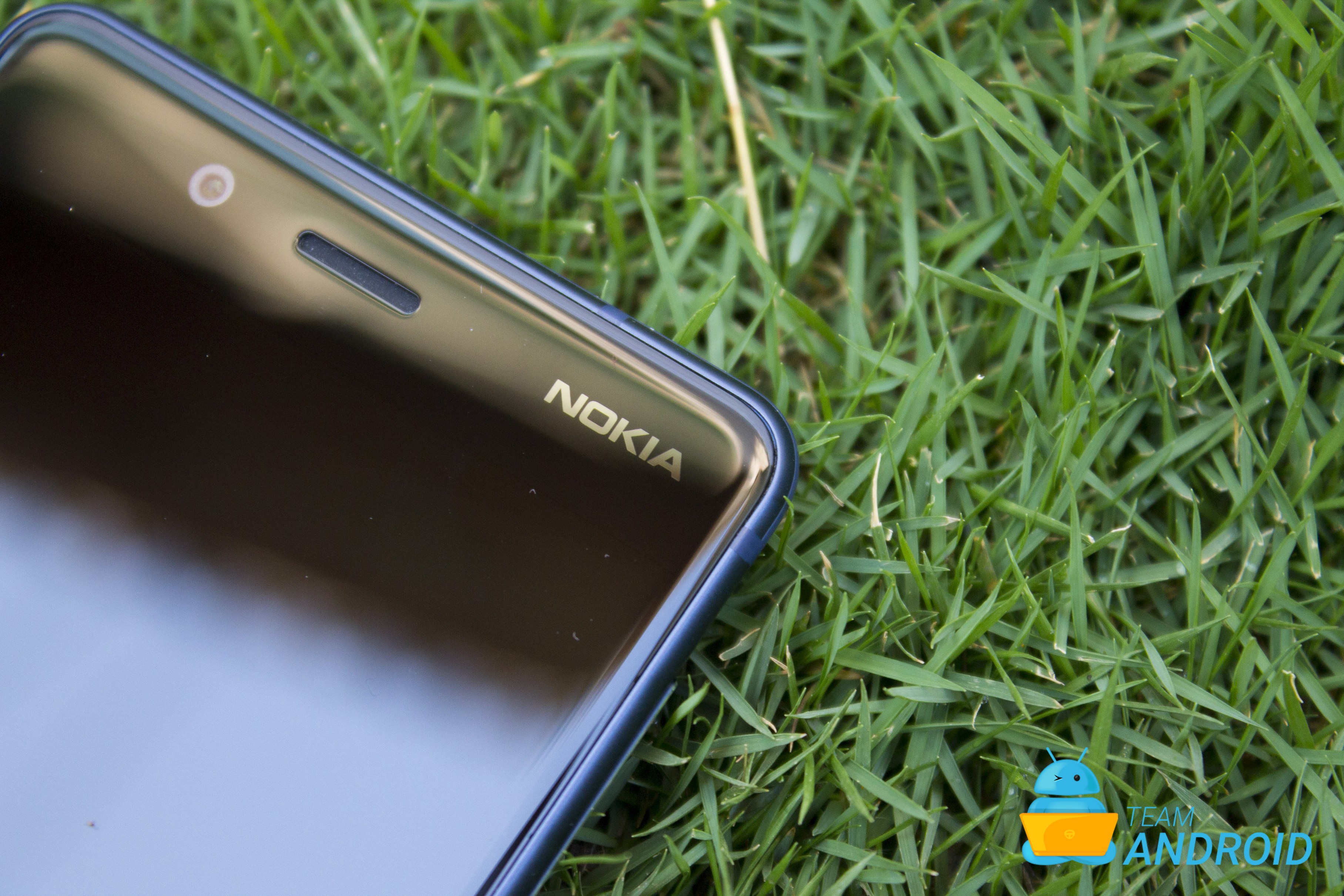
Lastly, Nokia 8 is advertised with Bothie functionality. The Bothie mode natively allows you to capture both front and back facing cameras at the same time. This comes in handy when you are doing a live-stream or are recording a family event which you want to be a part of. We can see this becoming useful in some scenarios but overall, it isn’t something groundbreaking.
Nokia 8: Connectivity, Memory and Battery
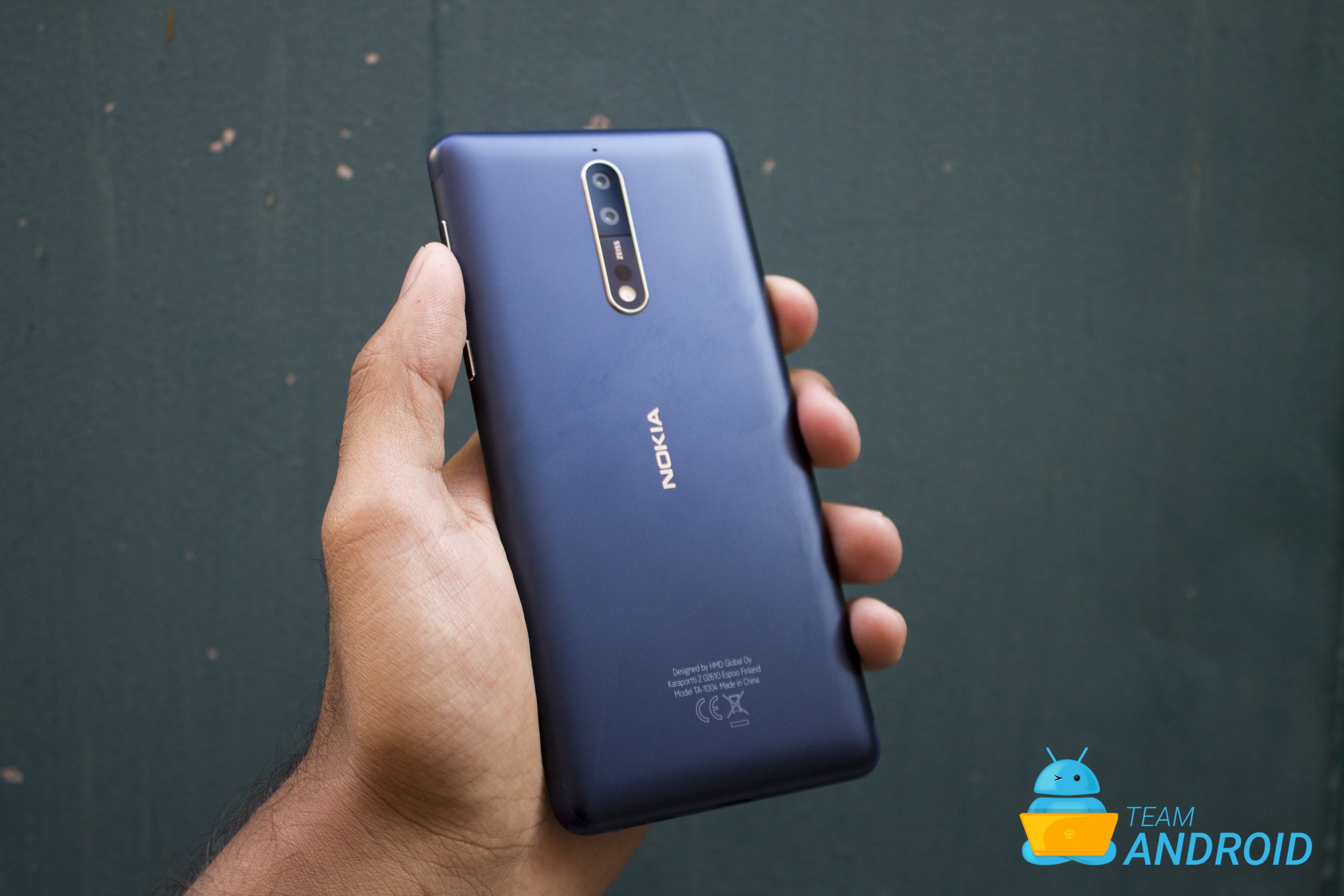
HMD Global has packaged the Nokia 8 quite well in terms of all the internals. The phone features Cat 9 network capabilities on supporting networks and ships with 64GB as its base storage. You can then expand the memory further by 256GB through an SD card. For the RAM, Nokia 8 has 4GB of high performing LPDDRX. As discussed earlier, we are quite glad Nokia 8 ships with a 3.5mm headphone jack allowing for easy connectivity to multitude of headphones and speaker systems.
The Nokia 8 is quite an efficient smartphone thanks to its stock software and large capacity battery – 3,090mAh. In our tests, you can easily average out north of 5hrs of on-screen time with adaptive brightness. Nokia could have gone with an AMOLED panel on this device to further enhance performance and visuals but that would have driven up the price hence the IPS panel is a good compromise.
Nokia 8: Software
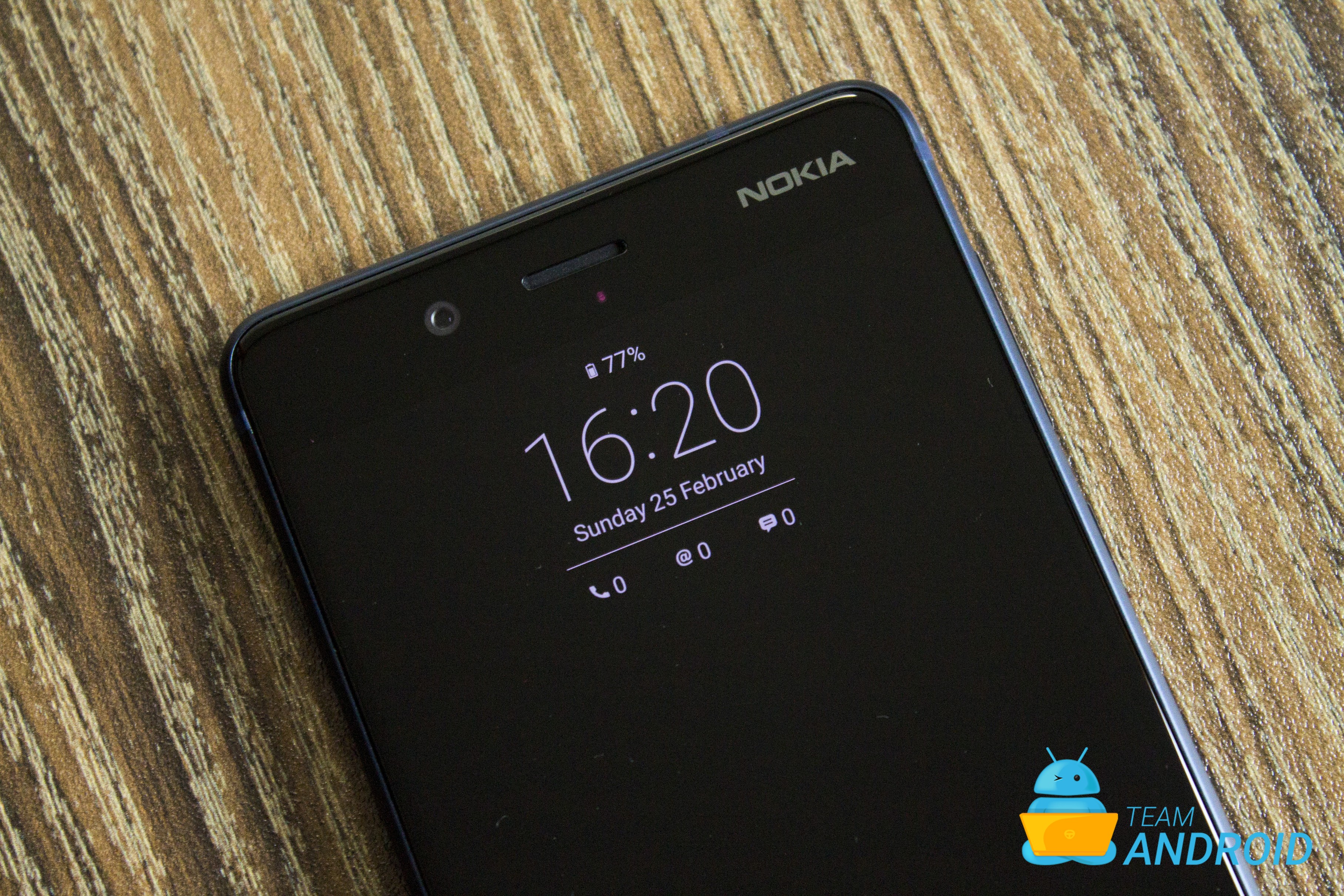
Undeniably, HMD Global is one of the very few brands providing a pure vanilla Android experience. By vanilla, we mean, there are no majore alterations to the source code that is released by Google. This approach has two direct benefits. One, you get blazing fast updates. As evidence, Nokia 8 is currently running Android 8.1 Oreo while other majority of 2017 flagship smartphones are still in line for Android Oreo upgrade. The second direct benefit is the performance. As there are no overlaying skins or changes, the device just whizzes through the OS with blazing speeds. If you move from a skinned Android device to Nokia 8, you would immediately notice the difference quite vividly.
There further indirect benefits as well. For example, Nokia 8 has a very small Operating System data footprint which means you get more space out of the standard 64GB to store your own data and media files.
Default bundled Nokia 8 Apps:
- Wallpapers: Nokia has added a Wallpapers app which you can use to get perfect resolution wallpapers for your device. These get updated regularly giving you a wide variety of choices.
- Google Duo: Duo is Google’s video call solution. It is bundled stock with Nokia 3. You can configure it directly with your Google account. It will automatically sync your contacts and allow you to contact them through video call.
- Camera: The camera app is a modified version suited for the Nokia 3. It includes different modes along with HDR capability for even better shots through the lens.
- Google Keep: Google Keep is also pre-installed on the device. Keep is a note taking app which supports sync directly with your Google account. This works best when you have multiple devices or you want to view your notes directly on your computer.

